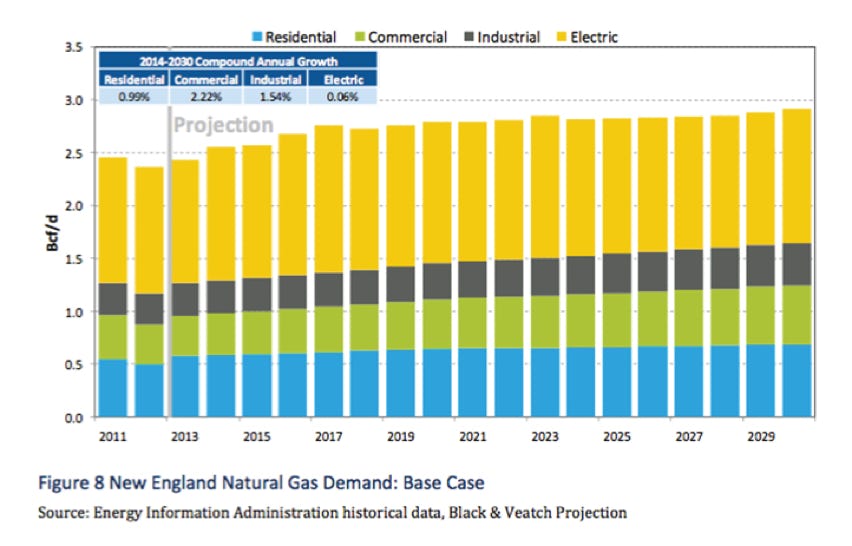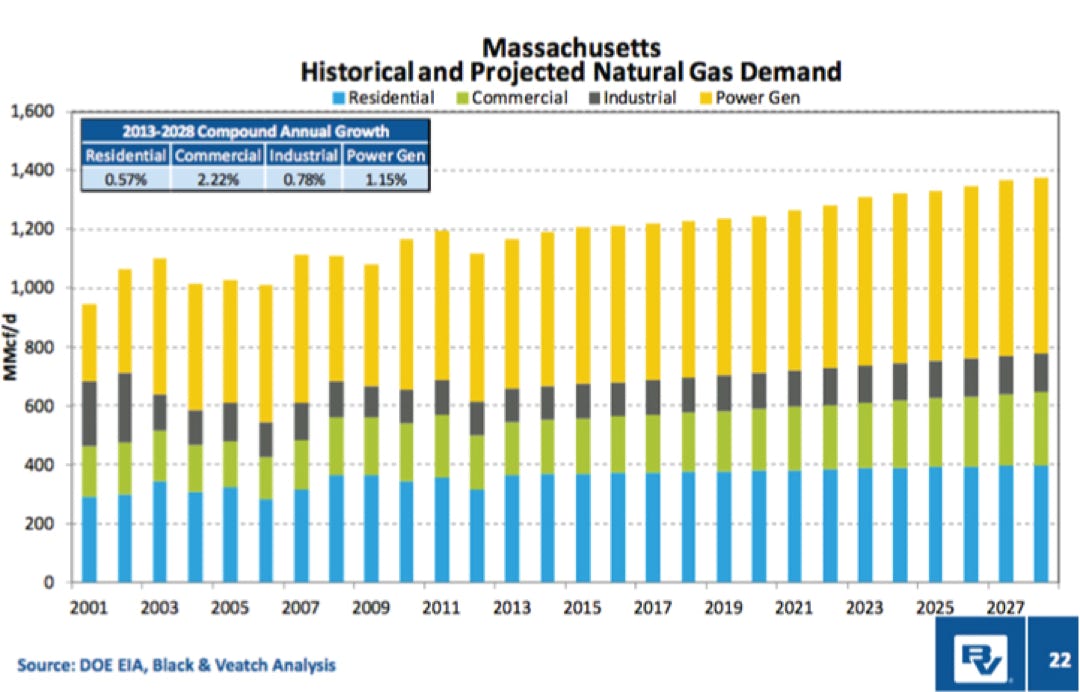The proposed Kinder-Morgan project is a major long-term infrastructure investment that would commit the Commonwealth and its ratepayers to decades of rising expenditures and extend our over-dependency on fossil fuels. It is also contrary to the state’s commitment to meet the greenhouse gas (GHG) emission reduction targets of the Global Warming Solutions Act (GWSA) (Chapter 298 of the Act of 2008).
– Henry Tepper, President, Mass Audubon
Addressing the purported need for Kinder Morgan’s ‘Northeast Energy Direct’ project:
Maura Healey Led Study – Power System Reliabilty in New England – November, 2015
Gordon Van Welie, do your job – LNG makes pipeline expansion unnecessary – April 3, 2015 – Vince Premus, Commonwealth Magazine click here to download a pdf of this article.
Burden Of Proof — The case against the proposed Northeast Energy Direct (NED) fracked gas pipeline
Energy New England’s Pipeline Alternatives Assessment, May, 2014 Report
There Are Alternatives To The Northeast Energy Direct Pipeline – Editorial by Jim O’Reilly, director of public policy for Northeast Energy Efficiency Partnerships, a nonprofit energy efficiency strategic programming and advocacy organization
Tennessee Gas Pipeline Overview June 2014 – NCT
Clean Energy Alternatives – From No Fracked Gas in Mass – Clean energy solutions that are available now.
Why alternative solutions to the proposed Tennessee Gas Pipeline deserve further evaluation
1. The proposed gas pipeline will deliver multiples of what New England actually needs.
The proposed pipeline will deliver an additional 2.2billion cubic feet of gas per day whereas, per the attached chart, New England requires only a fraction of that capacity to meet growth through 2029 (Natural Gas Infrastructure and Electric Generation: Proposed Solutions for New England, 26 August 2013, p. 25). Additionally the pipeline would deliver twice the 600million cubic feet/day amount requested by New England States Committee On Energy (New England Gas-Electric Focus Group Final Report March 28, 2014 p.2)
2. Fix Existing Infrastructure
Based on the report America Pays for Gas Leaks, prepared for US Senator Edward Markey, fixing gas leaks in current pipelines could provide up to 56 million cubic feet/day of gas to Mass., contributing at least 25% of the Commonwealth’s projected gas needs through 2028.
3. The new gas pipeline cost is now $2.7Billion.
The pipeline’s original estimated construction cost was $1.2Billion with a total projected cost of $2.288Billion through 2029. (Natural Gas Infrastructure and Electric Generation: Proposed Solutions for New England, 26 August 2013, pp11,). However, Kinder Morgan stated at a recent town hall meeting the estimated investment is $2.7Billion (Dracut Selectman Meeting April 8). We need to get clarity regarding exactly what this $2.7Bn comprises and potentially re-evaluate the business case.
—————————-
On April 12, 2014, the Department of Energy held the second in a series of meetings on strategies for the U.S. energy infrastructure.
Dracut resident Rich Cowan attended and presented his comments to the panel.
Testimony of Rich Cowan – Quadrennial Energy Review Meeting
From the Quadrennial Energy Review Meeting, Hartford, CT, April 21, 2014
“…when I grew up on the South Shore of Boston, I remember driving by the Dorchester gas tanks on I-93. There were at the time two gas tank there that supplied LNG during the winter, so that during peak months the Boston area had an adequate natural gas supply. Since 1993 there has only been one natural gas tank in Dorchester. I’m wondering if the situation is really as urgent as some of the panelists say. If so, would it make more sense as a short term solution to add more peak shaving storage tanks in Dorchester, in Portland Maine, and at existing gas fired power plants? According to recent documents filed by Boston Gas (see: http://www.env.state.ma.us/dpu/docs/siting/efsb14-1/22114ngrdptn.pdf ) this could be achieved at a lower cost than adding new 36 inch high pressure gas lines in populated areas and conservation lands.
Consumers should not have to bear the burden of a high-cost solution when alternatives are available…”
-Rich Cowan
Oil and Gas Companies Starting to Cut Back in U.S. Gas Shale Fields
Net Zero New England: How our Region Can Supply All its own Energy through Renewables from Sarah Byrnes on Vimeo.

click image to enlarge

click image to enlarge
All rights reserved. All content on this site property of Nashoba Conservation Trust.
Do not copy or reproduce in any form for any reason without written permission from Nashoba Conservation Trust.